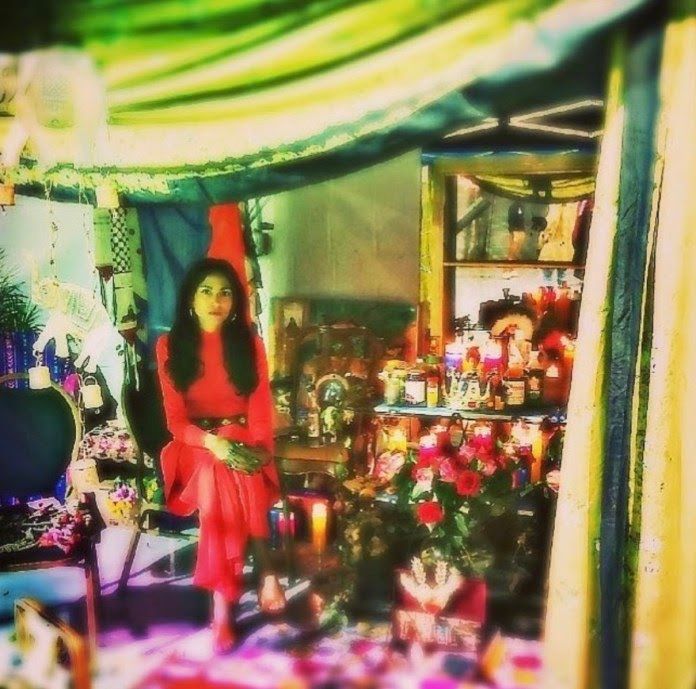
Kristina Kay Robinson
Republica: Temple of Color and Sound, 2018-present, video, 3:44 min.
TheCube Project Space

In January 1811, eight years after France was forced by the loss of Haiti, its most profitable colony, to sell Louisiana to the United States, hundreds of people held captive on plantations along the Mississippi River of southeast Louisiana revolted against the planter class. It was not the first uprising against enslavers in the region where the ocean that connects the Old World to the New meets the river that allowed the United States to manifest its colonizing “destiny,” but in the fictitious world that foregrounds artist s installation, it is the only successful one. After capturing New Orleans, per the artist’s alternative history, the revolutionaries continue east through coastal Mississippi, Alabama, and Florida until reaching the Atlantic, abolishing slavery in the deepest south decades before the American Civil War and severing the United States’ access to the continent’s second largest port. Republica, home to Robinson’s alter ego Maryam de Capita, is the nation-within-a-nation born of the insurrection’s imagined success. As an ambassador of Republica, de Capita travels the installation around the world, engaging devotees in ritual, prayer, and intellectual dialogue about the personal and global implications of white supremacist patriarchal imperialism, from experiences of sexual abuse to political unrest in far-flung countries. The Temple is a space for healing. Pre-COVID-19, visitors gathered before its elaborate layers of candles, fabrics, religious icons, books, and other relics, as De Capita provided entertainment and conversation. Now that a global pandemic has compounded the travel restrictions Republica faces, she must send the temple and her own image in two-dimensional form.
This artwork is an ontological reckoning that challenges viewers’ beliefs about the nature of reality. As COVID-19 and international political unrest in response to state-sanctioned violence lay bare the disparities in life chances between the descendants of colonizers and the colonized, The Temple beckons viewers to peer beyond the veil.
-Curator|Lydia Y. Nichols
Kristina Kay Robinson
(b. 1983, New Orleans, United States; based in New Orleans) A writer, curator, and visual artist born and raised in New Orleans, Louisiana. Her written, visual and curatorial practice centers and interrogates the modern and ancient connections between world communities. Robinson’s work both at home and abroad focuses on the impact of globalization, militarism, and surveillance on society and their intersections with contemporary art and pop culture. Her ongoing installation and performance art project, Republica: Temple of Color and Sound has been presented in exhibition at Welcome to the Afrofuture during Miami Art Week, New Museum’s residency program, Ideas City and the New Orleans African American Museum. Both iterations of Republica: Temple of Color and Sound received enthusiastic reviews in Sugarcane Magazine and most recently PIN-UP magazine.
Curator : Lydia Y. Nichols
Lydia Y. Nichols is a native New Orleanian cultural critic and arts administrator. Her work centers the lived experiences of Africans in the Diaspora and prioritizes community accessibility. Lydia’s essays have appeared in Pelican Bomb, Liberator Magazine, Gathering of the Tribes Magazine, and The Killens Review. As co-curator of street art exhibition and Prospect P.3+ site ExhibitBE, Lydia researched and documented the history of the blighted apartment complex in which the work was created to guide the curatorial process, managed community programming and daily operations, and, after the exhibition closed, coordinated the #PaintWhereItAint Tour through which several ExhibitBE artists traveled across the southwest United States to collaborate with artists in other cities on community-centered public art projects. Since, Lydia has created In/Between Spaces—a mobile group exhibition series in a 26’ U-Haul that explores Black identity in various spheres of modern life and that travels to predominantly Black neighborhoods in New Orleans to engage those who have been alienated from the world of contemporary fine art.


